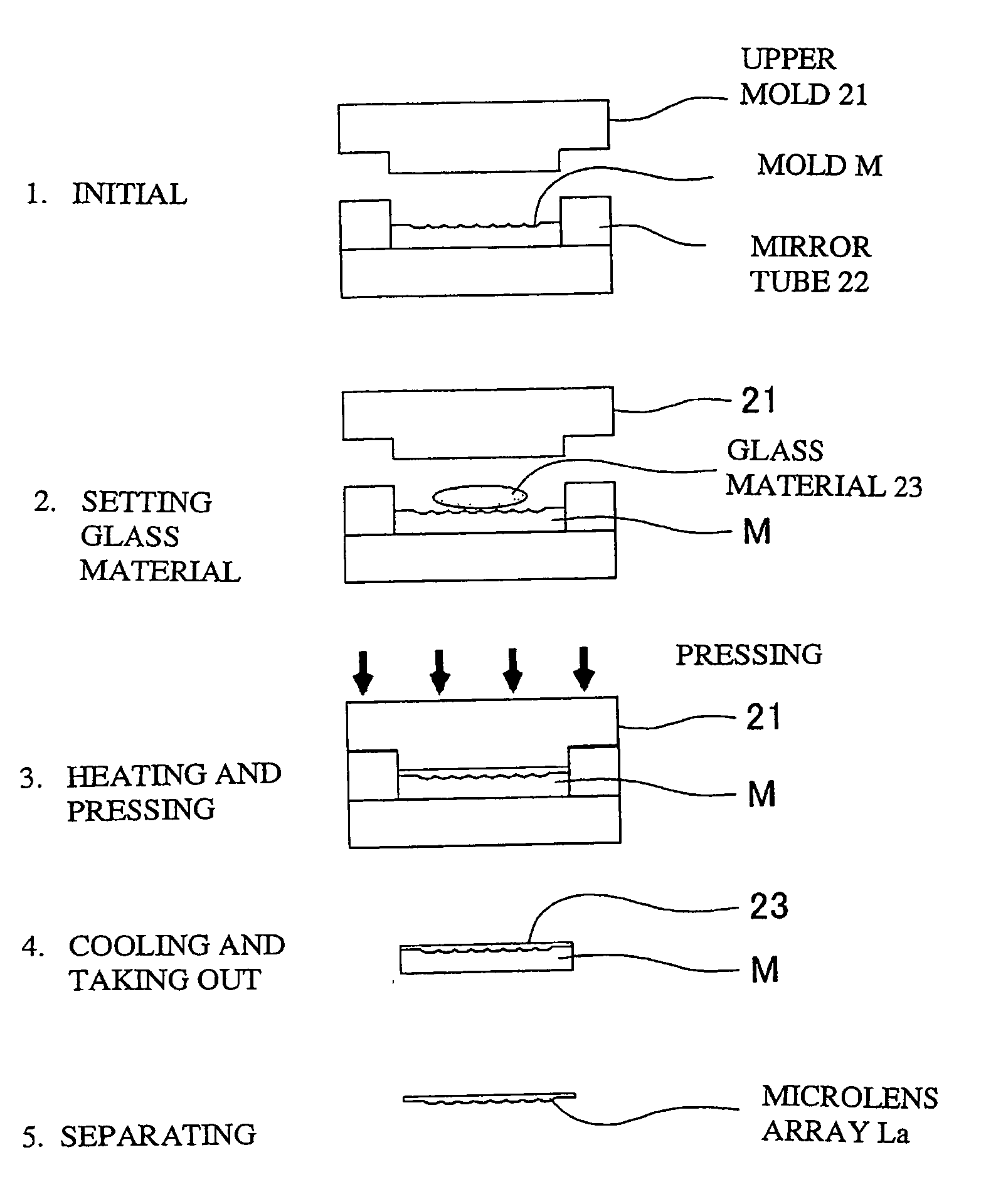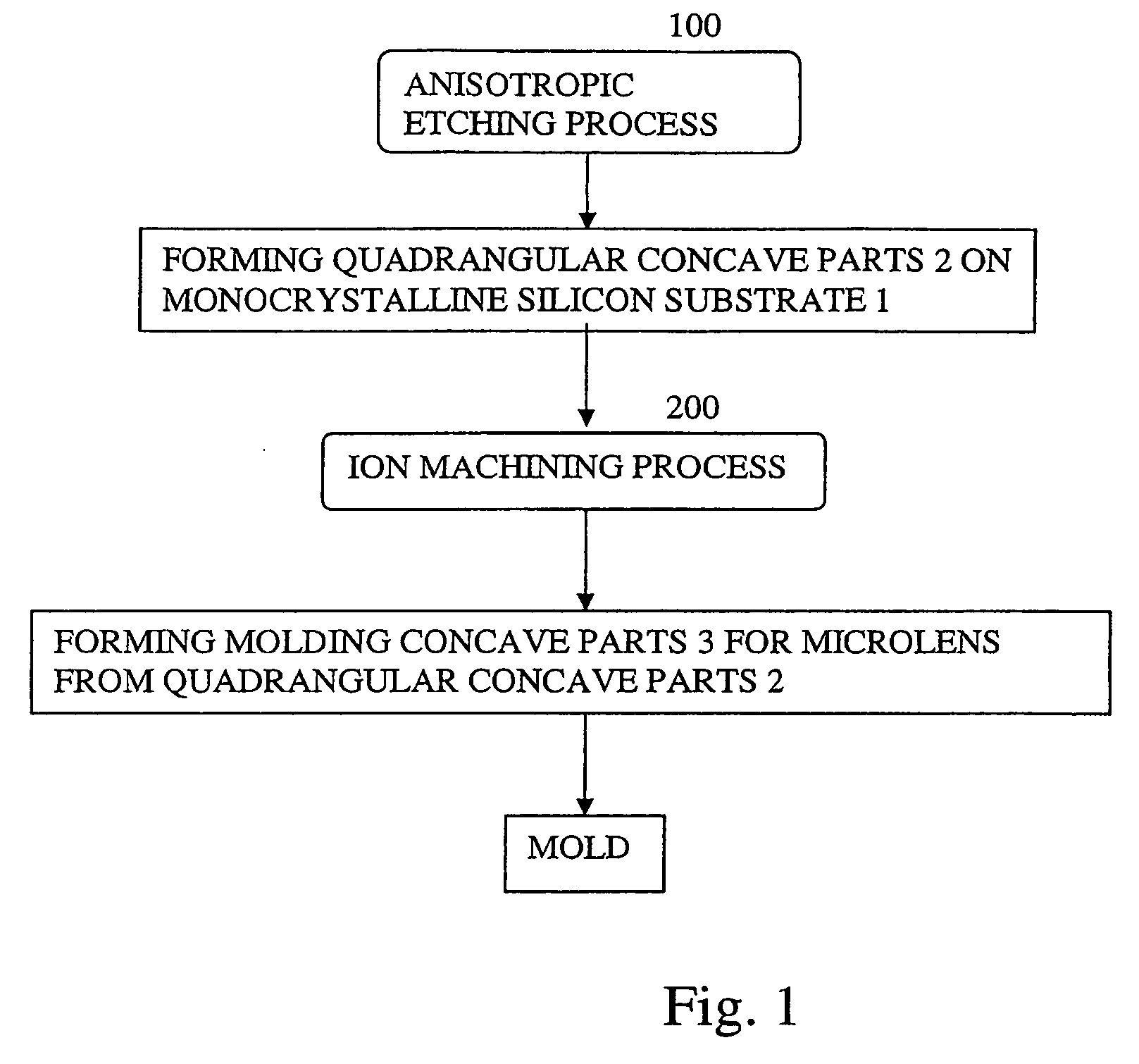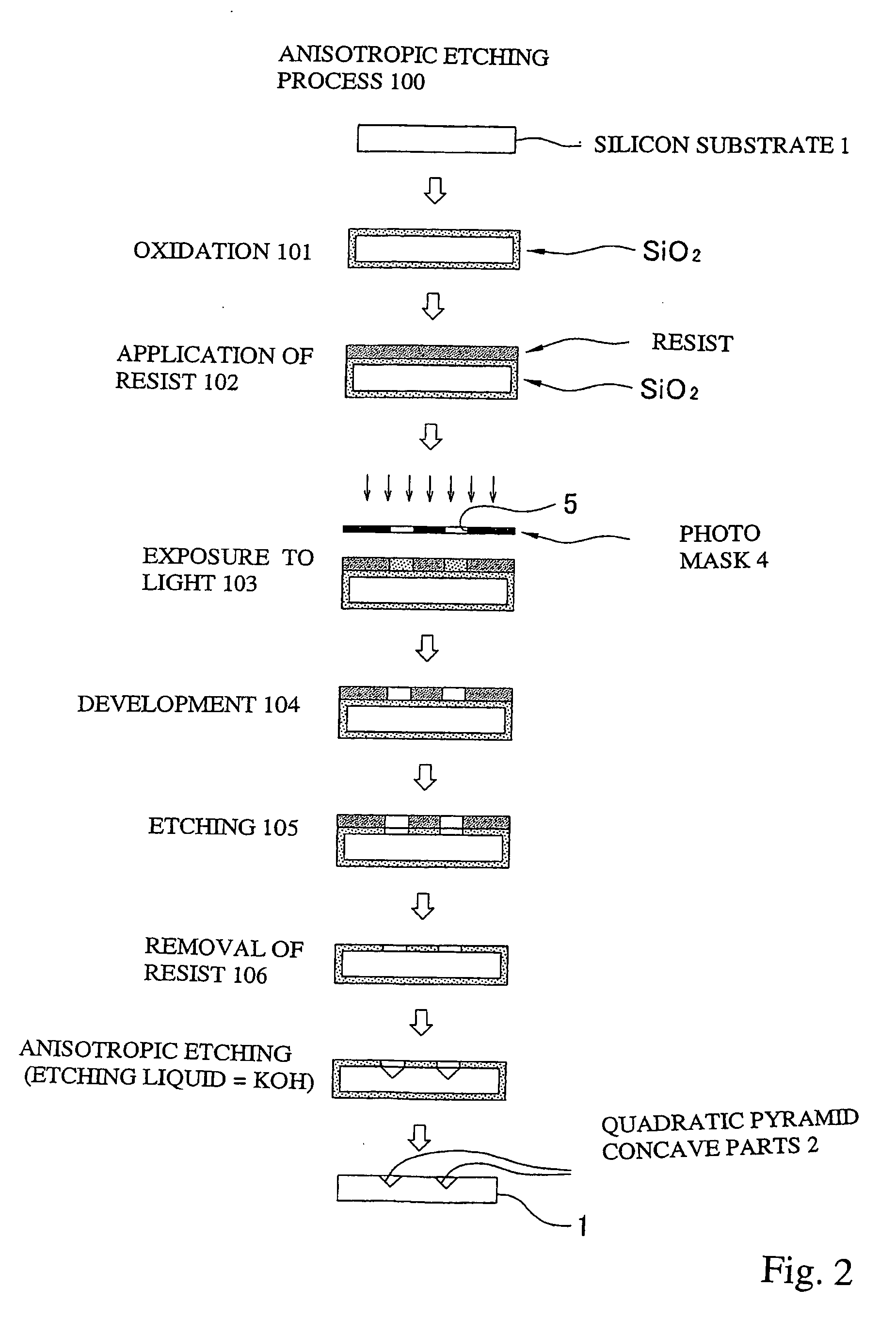Mold for microlens and process for producing the same
a microlense and microlens technology, applied in the field of microlenses, can solve the problems of low efficiency of light convergence, low productivity, and low production methods of ordinary lenses, and achieve the effects of low cost, low material cost and low cos
- Summary
- Abstract
- Description
- Claims
- Application Information
AI Technical Summary
Benefits of technology
Problems solved by technology
Method used
Image
Examples
Embodiment Construction
[0057]Embodiments of the invention are described next with reference to the drawings.
[0058]Basic principles of the production method of a mold for microlens according to this invention are explained first with reference to FIG. 1.
[0059]Firstly, a concave part hereinafter referred to as the quadrangular pyramid concave part 2 is formed on a single crystal silicon substrate 1 having a 100 crystal surface in an anisotropic etching process {100} using a chemical etching method. (See FIG. 2.) What is herein referred to as the quadrangular pyramid concave part 2, however, may be an indentation not only of a square shape but also of a rectangular shape in the plan view. In the case of an indentation with a square shape in the plan view, it is a normal pyramid shape with the top at one point. In the case of an indentation with a rectangular shape in the plan view, it is an indentation of a so-called wedge shape with the top having a finite length. The surfaces forming such indentations are ...
PUM
| Property | Measurement | Unit |
|---|---|---|
| Linear density | aaaaa | aaaaa |
Abstract
Description
Claims
Application Information
 Login to View More
Login to View More - R&D
- Intellectual Property
- Life Sciences
- Materials
- Tech Scout
- Unparalleled Data Quality
- Higher Quality Content
- 60% Fewer Hallucinations
Browse by: Latest US Patents, China's latest patents, Technical Efficacy Thesaurus, Application Domain, Technology Topic, Popular Technical Reports.
© 2025 PatSnap. All rights reserved.Legal|Privacy policy|Modern Slavery Act Transparency Statement|Sitemap|About US| Contact US: help@patsnap.com



